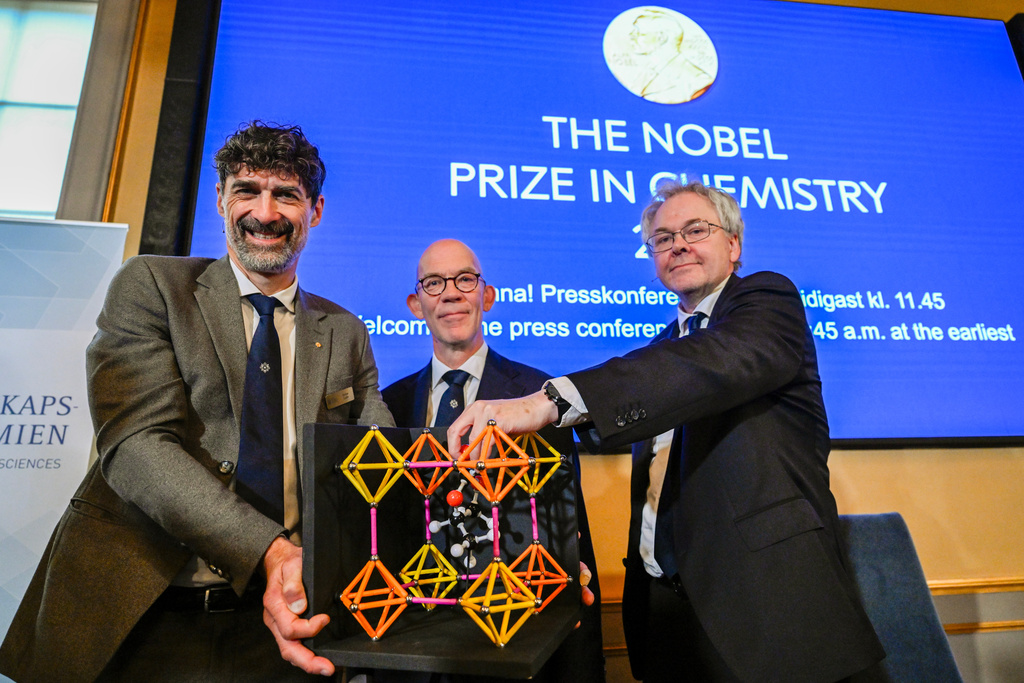ISLAMABAD: The Royal Swedish Academy of Sciences has awarded the 2025 Nobel Prize in Economic Sciences to Joel Mokyr, Philippe Aghion, and Peter Howitt for their work explaining how innovation drives sustained economic growth.
The 11 million Swedish kronor ($1.156 million) prize was split half to Mokyr, half shared between Aghion and Howitt.
Joel Mokyr
Joel Mokyr was born in 1946 in Leiden, the Netherlands. He is a professor at Northwestern University, US. Awarded half of the 2025 Nobel Prize in Economic Sciences, he identified the prerequisites for sustained growth through technological progress.
Mokyr’s research shows that for continuous innovation, societies need both knowledge that innovations work and scientific explanations of why. He also emphasized the importance of openness to new ideas and allowing change for growth to flourish.
Philippe Aghion
Philippe Aghion was born in 1956 in Paris, France. He shares half of the prize with Peter Howitt. He is a professor at Collège de France, INSEAD, and the London School of Economics.
Aghion co-developed a mathematical model explaining sustained growth through creative destruction, where new and better products replace older ones, driving economic progress but also disrupting existing companies.
Peter Howitt
Peter Howitt, born in 1946 in Canada, is a professor at Brown University, USA. He jointly received half the prize with Aghion for their theory of creative destruction.
Howitt’s work focuses on how firms innovate by developing better products and processes in a competitive rivalry that fuels economic growth, balanced by the social and economic effects of displaced businesses.
Laureates’ research
Over the past two centuries, economic growth fueled by technological progress has radically transformed societies. The laureates’ research uncovers why this sustained growth emerged and how the process of creative destruction underpins ongoing innovation and prosperity.
Laureates recognized for explaining innovation-driven growth
The Nobel Prize for Economic Sciences 2025 is divided with one half awarded to Joel Mokyr of Northwestern University, US, “for having identified the prerequisites for sustained growth through technological progress.”
The other half is shared by Philippe Aghion of Collège de France, INSEAD, and the London School of Economics, UK, and Peter Howitt of Brown University, US, “for the theory of sustained growth through creative destruction.”
From centuries of stagnation to continuous growth
For most of human history, economic growth was stagnant and irregular, despite occasional breakthroughs. Mokyr’s historical research explains that sustained growth requires not only knowing that a technology works but understanding why it works scientifically.
This connection between propositional knowledge (scientific explanation) and prescriptive knowledge (practical instruction) created a self-reinforcing cycle essential for continuous innovation.
Mokyr also highlights society’s openness to new ideas as vital, as during the Enlightenment in Europe, when institutions limited the blocking of innovation by privileged groups.
The economic model of creative destruction
Aghion and Howitt developed a 1992 mathematical model describing creative destruction, where companies with innovations outcompete older ones, leading to sustained progress. Their macroeconomic model captures the balance between research investment, market competition, and the monopoly profits that incentivise innovation.
This process is “creative” because it fosters new technologies but also “destructive” as older technologies become obsolete.
Economic growth beyond GDP
The laureates stated that growth means more than a rise in GDP; it encompasses advances in education, healthcare, job opportunities, and overall quality of life.
Since the Industrial Revolution, countries like Sweden and the UK have experienced steady annual growth rates of about 1.5% to 2%.
Practical and social foundations for growth
Mokyr’s work stresses practical and commercial knowledge’s importance in turning ideas into innovations. Britain’s early growth benefited from skilled artisans and engineers who translated concepts into products.
Sustained growth creates winners and losers, often provoking resistance from displaced groups. Managing these conflicts through social institutions is essential for ongoing innovation.
Balancing innovation and its social costs
Aghion and Howitt show that innovation benefits society but can impose losses on existing firms and their workers. This dual effect requires policies that balance encouraging research and development while addressing social impacts, such as supporting displaced workers through flexible labor arrangements.
Insights for future economic policy
Their research sheds light on recent challenges, like slowing growth and market dominance reducing competition. Encouraging social mobility and supporting innovators remain crucial. The laureates also warn sustained growth is not synonymous with sustainability, as well-designed policies are needed to address climate change, pollution, and inequality.
John Hassler, chair of the Nobel committee, said: “Economic growth cannot be taken for granted. We must uphold the mechanisms that underly creative destruction, so that we do not fall back into stagnation.”
.jpg)








.jpg)